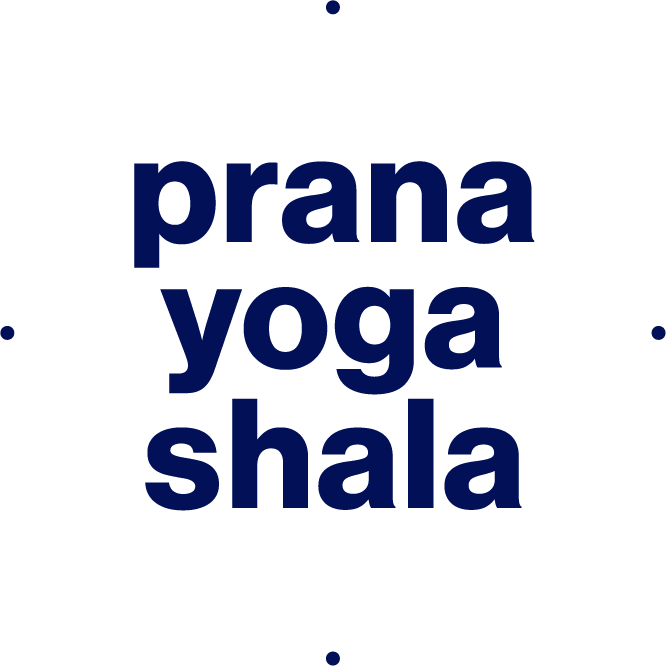Not an expert!
– The art of teaching yoga
by Ann-Charlotte Monrad
A while back I taught yoga at a mindfulness course for leaders. A guy came up to me after practice and started discussing flexibility. Based on what he’d been taught by his crossfit trainer, he just wasn’t sure that you could gain flexibility through dynamic yoga. We spent a decent amount of time discussing this, until his friend sitting next to us started laughing and said something along the lines of: ”Dude, why don’t you just take a look at her?”
Only then did it occur to us that I had been sitting in a fairly comfortable full lotus throughout the conversation, physically proving my point that dynamic yoga can indeed make you fairly flexible.
As someone who’s been training yoga teachers for the past seven years, one of the things I’m constantly considering is how best to do my job. And whereas the content of what I teach has changed over the years – from a long list of physical adjustments to adjustments mainly through props and precise verbal cuing, from focus on flexibility to focus on stability – the method hasn’t. And every year I’m encouraged that my method is working: Those students who dedicate a decent amount of time to their self practice during our six months of training, either at our school or at home, feel much safer in their sharing of yoga when we get to the day of certification.
We live in an age where you can look pretty much anything up on Wikipedia, and where we’re used to googling our way to expert status in a matter of minutes. Which is one of the reasons why I love yoga so dearly: Because it can’t be rushed. I’m aware that certain programs might offer a thorough knowledge of a set number of asanas in a few short workshop days, but where it’s definitely possible to understand an asana in a photo alongside the teacher’s notes, understanding that asana as it is unfolded and appropriated by the myriad of bodies that we come in contact with as yoga teachers, is an altogether different matter. If your manual should really explain an asana, it would have to have a version of the pose performed by every single student that you’ll ever come across. So instead I prefer to teach my students the skills of observation, asking and listening: What do you see when you teach? How does your student respond when you ask the questions: “How does this feel? Does this make it better?” knowing full well that educating students to listen to their bodies is also a process that takes time.
Over the years I’ve found that the writing of a truly useful yoga manual for yoga teachers who take on their profession as a way of offering service doesn’t happen on the computer. It happens through the amazing medium of muscles, tendons, fascia, bones, breath and awareness. It’s written in the teacher’s body. It’s written through the teacher’s ability to observe, unbiased and with curiosity. Not observing as an expert with all the right answers already in place, but observing because she wants to learn. This takes time. And a great deal of passion. For me to claim that anything else is possible - although maybe profitably and definitely easier than running a yoga school as part of a teacher training program - would be to go against everything that almost 20 years of continued practice and pretty much non-stop teaching has taught me.
And no matter how much this goes against the grain of the insistence of our day and age to make everyone experts in a few weeks, this is how I’ll keep approaching the teaching of yoga and the teaching of teachers: By insisting that the only way to truly understand yoga is visceral.
Of course you’ll read and reread your anatomy books (and there are absolutely no shortcuts when learning anatomy: It takes time and perseverance, just as learning those tongue-breaking asana names does). But at some point, you’ll need to put your book down and test what you’ve read on your mat or observe it in the bodies of your students.
On top of that there’s also the question of physical and mental energy: You can’t read about how your body feels on days full of sunshine and days full of sadness. You can’t read about how a weekend of meditation will affect you. And you can’t read about it when it comes to the classes you teach. You don’t teach them on paper. You teach them in real life. And maybe that’s the reason why so many of us are drawn to yoga in the first place: It really only happens in the present moment. In our conversation with the present moment. Whether we’re sitting in full lotus, playing around with pincha or lying on our backs completely exhausted.
And everyone who wants the most beautiful yoga manual available, the one that is constantly being written in their own bodies through close observation and the wish to be of service rather than being an expert, are more than welcome to come share yoga with me.
/AC
Både vores 300-timers overbygning for yogalærere, der starter til november, og vores 200-timers grunduddannelse, der starter til januar, er ved at være fulde. Kig forbi til en prøvetime, hvis du vil have en fysisk fornemmelse af, hvordan vi arbejder med yogaen hos Prana.
